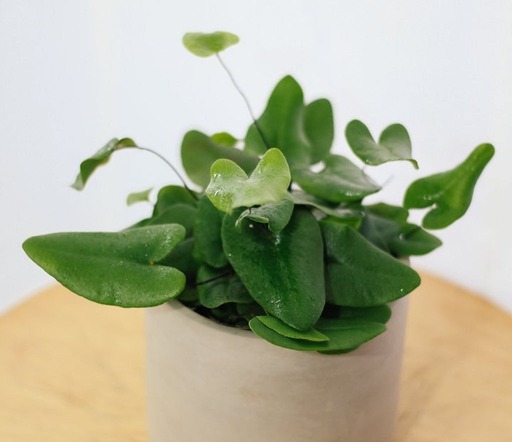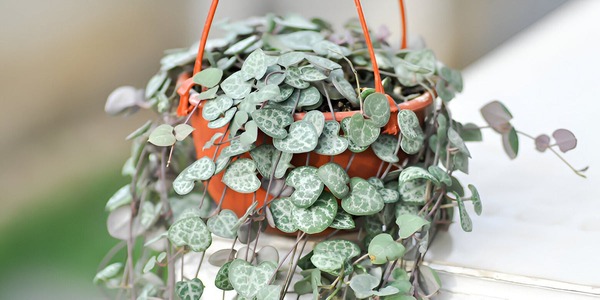Bringing exotic heart-shaped plants into your living space is a wonderful way to add a touch of elegance and natural beauty to your home. These plants, with their uniquely shaped leaves, do more than just fill your space with greenery – they create a warm, inviting atmosphere that’s sure to capture attention. Whether grown outdoors or indoors, placed on a windowsill, a coffee table or as a centerpiece, these heart-shaped plants are not just visually striking but also bring a sense of calm and tranquility to any room.
In this article, we’ll introduce you to a variety of these captivating plants, each with its own charm and character, perfect for enhancing your decor. Whether you’re an experienced plant enthusiast or just beginning your green journey, these plants will infuse your living space with life and intrigue, making it feel more vibrant and welcoming.
1. Calla Lily

When you look at calla lily flowers from above, you’ll notice the heart shape of its spathe, which stands out clearly. A finger-like spadix emerges from the center, but it’s the spathe that catches the eye with its striking colors—white, yellow, orange, pink, red, or purple—and its unique shape.
This flower is a stunning addition to any ornamental garden. While the elegant white flowers are the most common, there are some types coming in a variety of colors.
They thrive best in areas where they can get some or full sun during the day. They prefer warm conditions, with daytime temperatures of at least 70°F (21°C). Plenty of light is key to producing flowers. They also need consistent moisture throughout the season and benefit from good humidity. It’s important to plant them in well-prepared beds with good drainage.
As these flowers begin to fade, you should carefully remove them from the plant to prevent seed production and encourage more blooms. Each faded flower stem should be cut back to the base of the plant.
2. Bleeding Hearts

The bleeding heart flower brings a delicate charm to any garden with its distinctive heart-shaped blooms that hang gracefully from curved stems. Along with their captivating flowers, bleeding hearts have eye-catching foliage, typically in shades of blue-green or silver, that beautifully complements the flowers. These heart-shaped blossoms appear from late spring to early summer, adding a touch of elegance to woodland gardens.
This plant thrives in woodland settings and is an excellent choice for a shade garden, providing vibrant color from early spring to early summer. Bleeding hearts do best with morning sun and afternoon shade, though in warmer southern areas, they can handle full shade. They prefer well-drained soil enriched with organic matter. While they can tolerate some morning sun, they especially benefit from afternoon shade in hotter climates.
It’s important to avoid overwatering, as this can cause root rot, while too little water can make the leaves and stems wilt. To keep the plant healthy, allow the top layer of soil to dry out between waterings to prevent it from sitting in water.
3. Anthurium

Native to America and the Caribbean, anthurium is known for its heart-shaped spathes that are often mistaken for flowers. This plant has a lot to offer, with its heart-shaped leaves and vibrant blooms that come in bright red, as well as pink, white, and even purple varieties.
To grow one, let’s provide warmth and humidity to keep it healthy. For the best blooms, grow your anthurium in bright, indirect light. Even without flowers, the leaves are beautiful on their own. All this plant needs is a bit of water when the soil feels dry, and it will eventually grow to about two feet tall. However, be sure to place it out of reach of children and pets, as it is slightly toxic due to calcium oxalate crystals.
4. Heart Fern

The Heart Fern is native to the tropical regions of Southeast Asia with glossy green leaves and heart-shaped fronds that seem to float on delicate black stems.
This beautiful houseplant thrives in high humidity, making it a great choice for terrariums. To increase humidity, you can place your Heart Fern in a bathroom or near the kitchen sink, mist it a few times a day, or keep it in a room with a humidifier.
It prefers indirect sunlight. In its natural habitat, it grows in partial shade under the forest canopy. Avoid exposing it to bright, direct sunlight, as this can scorch the leaves. The soil should drain well but still retain some moisture to prevent the plant from sitting in stagnant water. Water the fern when the top inch of soil feels dry, which is usually about once a week.
5. String of Hearts

The string of hearts plant is an attractive houseplant with small, heart-shaped leaves. Its trailing vines look beautiful in hanging baskets or placed on shelves and windowsills. The gray-green leaves have a striking marbled pattern, while the thin, string-like vines display a distinctive purple hue.
This delicate vine thrives in plenty of sunlight, so placing it in a south-facing window is ideal, where it can grow up to three feet long. Although not a succulent, the string of hearts is almost as drought-tolerant, so it’s best to let the soil dry out completely between waterings. To encourage fuller, bushier growth, prune the plant regularly.
6. Sweetheart Hoya
 Sweetheart hoya also known as the Valentine plant, is a popular gift around Valentine’s Day because of its heart-shaped leaves. With its large, green, heart-shaped leaves, this houseplant is truly charming and a lovely addition to any home.
Sweetheart hoya also known as the Valentine plant, is a popular gift around Valentine’s Day because of its heart-shaped leaves. With its large, green, heart-shaped leaves, this houseplant is truly charming and a lovely addition to any home.
If the long vines covered in big green hearts weren’t charming enough, this plant also produces fragrant blossoms, even when grown indoors. Plus, it’s very easy to propagate, allowing you to grow new plants with ease. This succulent doesn’t need much water and can tolerate low light, but it thrives best in bright, indirect light.

